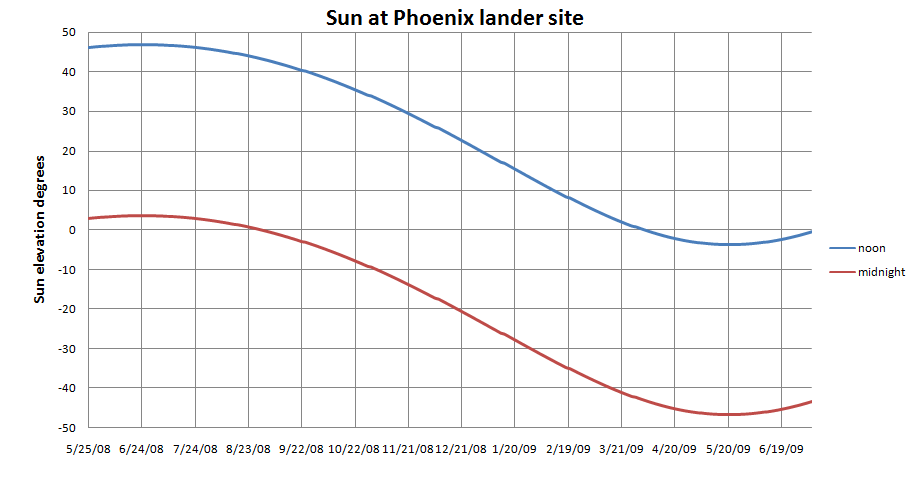QUOTE (Deimos @ Jun 8 2008, 01:16 AM)

Phoenix has plans for night imaging. Most of it supports atmospheric science, but some will include a photometric campaign (anit-Sun imaging is key), and I'd hope for a few midnight Sun shots. The "night-time" ("daytime" being the lander work-day) science is delayed, since the systems engineering crowd is fully occupied with the core activities involved in sample acquisition and transfer. Things like a camera pre-heat test are needed before going ahead with "first-time activities". It sounds conservative, but I certainly won't forget that attempting a wake-up for night-time MET and imaging is the last set of commands Pathfinder attempted to obey.
Thanks Deimos - it sure sounds like you know what you are talking about!!
My deep hope was that the interest in finding out more about "Holy(#$%@^!!)Cow" and thus an early midnight shot looking down-sun with the arm shadow through that feature, would trump engineering concerns. You have made starkly clear a professional tilt for caution! So I'll have to wait or guess what the scene will look like at midnight. Since I service the media, I'll have to guess! ('Why wait when you can speculate' is, I think, the motto...)
Thanks to the LPL PAO, I have the overnight arm position for SOL 12 so that is the view that I'm doing. It was parked over near the +Y (east) Solar Array, out of the way of the work area for photo coverage. I'm now looking more SSW through the lander from the Northeastern edge of that workspace, about a foot and a half off the surface. That great shot fredk pointed me to -
MER downsun - looks to have a sun elevation of about 10 degrees (based on where the MER deck shadow cuts the Hi-gain antenna shadow) which is somewhat higher than the nearly 4 degrees at Phoenix midnight (jmknapp's thread-start post
here).
Some of the effects that I would expect on the surface seem apparent in that MER hazcam pic, such as the surface brightening as you approach directly downsun (the camera shadow). But the effect of the sky to go "darker" as you move from the horizon then up is something that I want to nail down a bit. Is that an artifact of the camera and extreme fish-eye lens? I've noticed that B/W pics have a lot more interesting contrast than their color versions; Mars seems to want to blandify everything in a haze of pinkish/orangy-brown!
And then, could there have been any clouds on SOL 12 at midnight? One of the benefits of art is that I can use something akin to artist's licence here (but not a 007 licence) - that is, I need to be plausible. Of course, any painting of some clouds would have to be a lie in the specific case, but perhaps acceptable as an illustration of fact: there are clouds at the Phoenix site - this is what they could look like.
I will have a chance to correct any massive errors after the painting's first release. But before that, any speculation is welcome!
Paul


